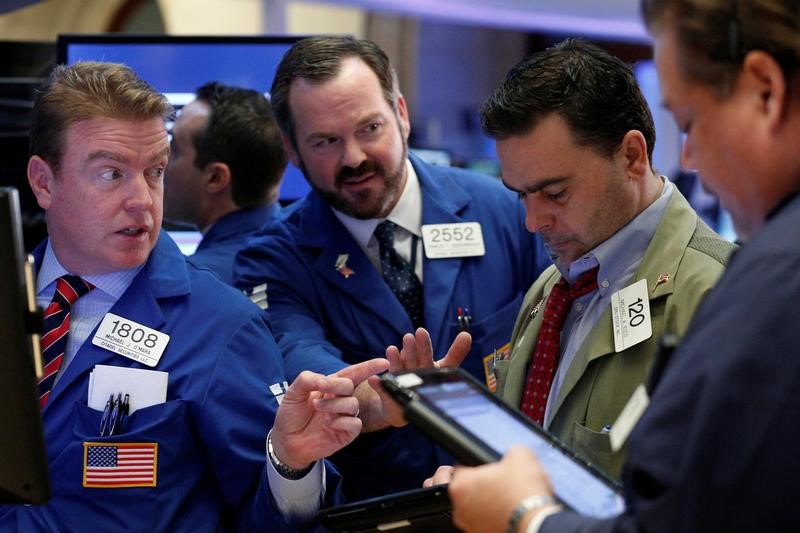By Claire Milhench
LONDON (Reuters) - Investors continued to chase the inflation trade in the week that U.S. President Donald Trump reiterated his pledges on tax cuts and spending, and Fed officials hinted at a March rate hike, Bank of America Merrill Lynch (NYSE:BAC) (BAML) said on Friday.
Equity funds enjoyed a ninth straight week of inflows, attracting $9.8 billion in the week to Wednesday, having pulled in some $70.6 billion year-to-date, the bank said.
Investors are betting that Trump's plans to provide "massive tax relief" and a $1 trillion infrastructure spending package, as outlined in a speech to the U.S. Congress on Tuesday, will spur growth and inflation.
The Dow Jones Industrial Average (DJI) breached the 21,000 mark for the first time in the wake of Trump's speech as bank stocks surged on the prospect of a March rate rise.
Hawkish rhetoric from Fed officials following strong U.S. data pushed the probability of a 0.25 percent rate hike to over 70 percent.
BAML analysts noted that this combination of Fed rhetoric and Trump's speech had triggered the largest daily inflow to the SPY (NYSE:SPY) Exchange Traded Fund (ETF), which tracks the S&P 500 (SPX), since December 2014. It attracted $8.2 billion on March 1.
In total, U.S. equities attracted $6.7 billion over the week, with materials, energy and infrastructure continuing to do well. Utility funds also enjoyed the largest inflows in 35 weeks, attracting $400 million, possibly boosted by the infrastructure theme, BAML said.
Japanese equities remained investors' preferred play on a strong U.S. dollar, attracting $700 million. Japanese exporters generally do well when U.S. consumer spending picks up.
However, flows to European equities reversed, with some $1.7 billion of redemptions, the largest in 13 weeks.

European equities gained 2.6 percent in February (FTEU3) amid signs of economic recovery, but investors have turned cautious as French presidential elections approach.
Emerging equities, meanwhile, suffered their first outflows in eight weeks, losing $600 million. Emerging debt funds on the other hand remained in favor, attracting $900 million.
Overall, bond funds attracted $9 billion, with investors showing a preference for corporate credit. Investment grade bond funds attracted $6.5 billion and high yield bond funds pulled in $1.4 billion. Government and treasury bond funds lost $1.4 billion, their largest outflows in 10 weeks.